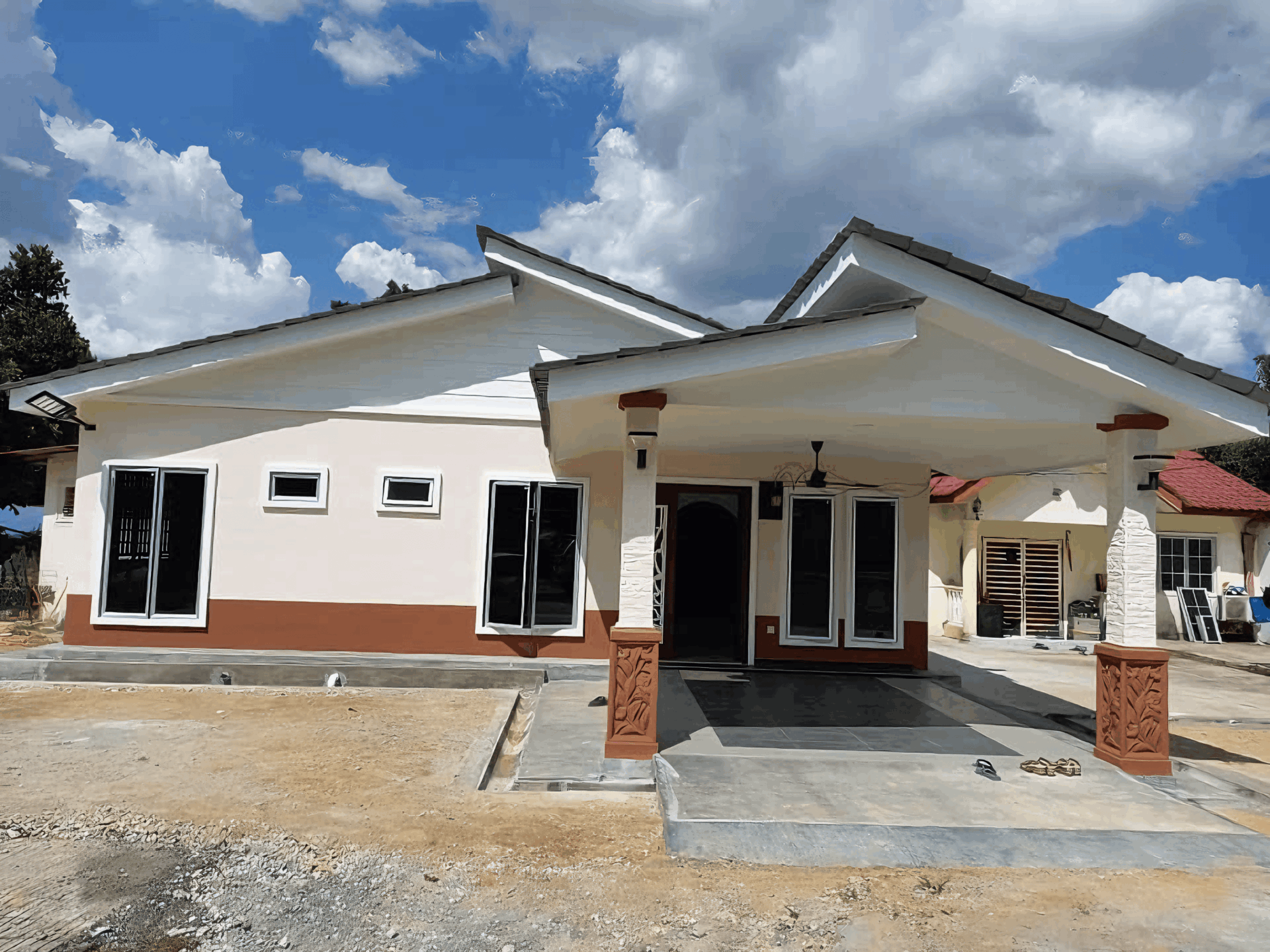
Blog
How to Navigate the Complex World of Construction Safety Compliance in Malaysia | RumahHQ

Navigating the world of construction safety compliance in Malaysia can feel like trying to solve a Rubik’s Cube—just when you think you’ve got it all figured out, a new twist or turn comes into play. With rapid development taking place all across the country, safety regulations are constantly evolving, making it more crucial than ever for industry players—be it project managers, site supervisors, or workers—to stay on top of the game. But fear not! In this article, we’ll break down the maze of regulations, standards, and best practices that govern construction safety in Malaysia. Whether you’re just stepping into the industry or a seasoned pro looking to refresh your knowledge, we’ve got tips and insights to help you navigate the complex landscape of safety compliance. So, let’s roll up our sleeves and dive in!
Understanding the Regulatory Framework for Construction Safety in Malaysia
Navigating the regulatory landscape for construction safety in Malaysia can often feel like wandering through a maze. The construction industry is tightly regulated by various legislations, guidelines, and standards, primarily governed by the Occupational Safety and Health Act 1994 (OSHA) and its accompanying regulations. This framework not only sets out the responsibilities of employers to provide a safe working environment but also emphasizes the importance of worker training and safety procedures. Notably, the regulations also align with international standards to ensure that safety practices meet a global benchmark.
As construction stakeholders, it’s crucial to familiarize yourself with key regulations that directly impact project safety. These include:
- The Construction Industry Development Board Act 1994: Establishes protocols for the registration and contractor management.
- Utilities and Services Act: Addresses safety in the management of utilities that can affect construction sites.
- Environmental Quality Act: Focuses on minimizing environmental impacts arising from construction activities.
Understanding these laws is vital for ensuring both compliance and the safety of workers on-site. Moreover, the regulatory framework mandates regular audits, risk assessments, and safety trainings to keep safety standards in check. This all ties back to the employer’s main responsibility: ensuring that not only the regulations are followed, but that they cultivate a culture of safety among all team members.
To make sense of the intricate legislation, many organizations turn to safety professionals and consultants who can provide expertise in navigating the various compliance pathways. A helpful way to visualize the framework of compliance is through the following table:
| Regulation | Focus Area | Importance |
|---|---|---|
| OSHA | Worker Safety | Fundamental Legal Requirement |
| CIDB Act | Contractor Management | Quality Control |
| Environmental Quality Act | Environmental Protection | Eco-Friendly Compliance |
By understanding these regulations and their interconnectedness, stakeholders can better navigate compliance challenges and significantly reduce the likelihood of incidents on-site. Remember, safety isn’t just about adhering to laws; it’s also about fostering an environment where every worker feels valued and protected.

Identifying Common Hazards on Construction Sites
Construction sites are bustling hubs of activity, but with that comes a host of potential dangers that workers and site managers need to be well aware of. Recognizing these hazards is the first step in creating a safer environment for everyone involved. Common threats include falls from heights, which often occur due to inadequate safety gear or unstable scaffolding. Similarly, tripping hazards abound, thanks to tools, materials, and debris left scattered around the site.
Another significant risk category is related to heavy machinery and equipment. Operators should always be experienced and vigilant to avoid accidents. The danger of being struck by moving vehicles is also critical—site traffic control measures, like designated pedestrian walkways and clear signage, can drastically reduce these incidents. Additionally, the exposure to hazardous substances, such as chemicals or silica dust, necessitates proper training and usage of personal protective equipment (PPE) to ensure the health of workers.
understanding electrical hazards is crucial, especially since many construction sites involve temporary electrical systems. Workers should be trained to recognize the signs of faulty wiring and overloaded circuits, and they should follow strict lockout/tagout procedures. Below is a helpful table summarizing these common hazards and their respective safety measures:
| Hazard | Safety Measures |
|---|---|
| Falls from heights | Use harnesses & proper scaffolding |
| Tripping hazards | Keep areas tidy & clear tools away |
| Heavy machinery | Train operators & implement traffic control |
| Hazardous substances | Use PPE & conduct safety training |
| Electrical hazards | Follow lockout/tagout protocols |

Establishing a Culture of Safety among Workers
Creating an environment where safety is prioritized requires collective effort from both management and workers. It’s crucial to foster communication channels that allow workers to express concerns without fear of repercussion. Regular safety meetings can also reinforce this culture, ensuring that safety isn’t just an afterthought but a core value. Consider implementing the following strategies to promote a proactive attitude toward safety:
- Open dialogue: Encourage workers to freely share their experiences and suggestions regarding safety practices.
- Visible leadership: Have management participate in safety drills and training sessions to showcase commitment.
- Recognize safe behavior: Acknowledge workers who adhere to safety protocols, creating positive reinforcement.
Training is a fundamental pillar of establishing a safety-oriented culture. Tailored training sessions that cater to the specific needs of your workforce not only equip them with essential skills but also emphasize the importance of compliance with safety regulations. When workers understand the ‘why’ behind safety measures, they are more likely to adopt them. You might also want to consider using the following approaches:
- Interactive workshops: Engage workers through hands-on activities that illustrate potential hazards.
- Safety role-playing: Simulate common scenarios to help workers practice their response in real-life situations.
- Feedback loops: After training, solicit feedback to continuously improve the content and delivery.
it’s essential to ensure that safety measures are integrated into everyday operations. This means making safety a part of your company’s identity, where every worker feels responsible for their own safety and that of their colleagues. Regularly update safety protocols to reflect the latest regulations and make them easily accessible. Here’s how you can integrate these principles:
| Action | Description |
|---|---|
| Daily Safety Briefings | Conduct short meetings to discuss the day’s tasks and associated safety concerns. |
| Safety Signage | Place clear and visible safety signs around the worksite. |
| Periodic Audits | Carry out regular assessments of safety practices on-site. |

Effective Training and Development Programs for Safety Compliance
When it comes to ensuring safety compliance in the construction industry, a well-structured training program is your best ally. A successful program should be tailored to suit the specific needs and risks of your construction projects. This means integrating field practices with theoretical knowledge so that employees not only understand safety regulations but also know how to apply them. Involving experienced safety professionals in the development of these programs can provide insights that are both practical and relevant.
Creating a culture of safety starts with engaging training methods. Instead of standard lectures, consider using interactive solutions like virtual reality simulations, which allow workers to experience hazardous situations in a safe environment. Other effective methods include:
- On-site training sessions that mimic real-life tasks
- Workshops focusing on hands-on practice
- Regular safety drills and emergency response training
It’s essential to gauge the effectiveness of the training through feedback and assessments. Implementing a simple tracking system can help identify areas for improvement. Here’s a quick overview of how to assess training effectiveness:
| Assessment Method | Description |
|---|---|
| Surveys | Collect feedback from participants about the training content and delivery. |
| Knowledge Tests | Conduct quizzes before and after training to measure knowledge gained. |
| On-the-job Observations | Monitor employee behavior to see if they apply learned safety practices. |

The Role of Safety Management Systems in Construction Projects
In the bustling realm of construction in Malaysia, safety management systems (SMS) play a pivotal role in ensuring that projects not only meet deadlines but do so with the highest regard for worker safety. These systems act as a comprehensive framework, helping project managers to identify hazards, assess risks, and implement strategies that mitigate those risks effectively. By fostering a proactive safety culture, SMS encourages everyone on site—from workers to executives—to contribute to a safer and more compliant working environment.
One essential aspect of these safety management systems is their ability to enhance communication and training among project participants. By standardizing safety protocols and procedures, workers receive consistent and relevant training. This reduces the likelihood of accidents and injuries significantly. Key components of SMS often include:
- Regular Safety Meetings: Encouraging open discussions about safety concerns.
- Incident Reporting Mechanisms: Simplifying how workers can report safety issues.
- Safety Audits: Conducting routine evaluations of compliance and practices.
Table management also plays a critical role in streamlining these procedures. Here’s a quick look at how effective communication within SMS can be organized for better safety management:
| Communication Method | Frequency | Responsibility |
|---|---|---|
| Toolbox Talks | Weekly | Site Supervisor |
| Safety Incident Reports | As Needed | All Staff |
| Monthly Safety Review | Monthly | Safety Officer |
Ultimately, a well-implemented safety management system not only protects workers but also enhances overall project efficiency. By embracing technology and data management systems, construction projects can easily pivot to address safety needs in real-time, ensuring a compliant and resilient operation. Safety becomes a shared responsibility, woven into the very fabric of project planning and execution.

Navigating Legal Consequences of Non-Compliance
Understanding the legal implications of non-compliance with safety regulations in the construction industry is vital for stakeholders at every level. The consequences can be severe, often leading to hefty fines, project delays, and even shutdowns. In Malaysia, authorities like the Department of Occupational Safety and Health (DOSH) hold the power to enforce compliance and take legal action against those who fail to adhere to safety standards. Thus, it’s crucial to stay informed about the laws and regulations that govern construction safety to avoid pitfalls.
To ensure compliance, businesses should prioritize the following key practices:
- Regular Training: Keep your team updated on safety protocols and regulations.
- Documentation: Maintain thorough records of safety inspections and training sessions.
- Risk Assessments: Conduct frequent assessments to identify and mitigate potential hazards.
In cases of non-compliance, the repercussions can manifest in various forms. Here’s a quick overview of common legal consequences:
| Type of Consequence | Description |
|---|---|
| Fines | Financial penalties imposed for safety breaches. |
| Reputational Damage | Loss of credibility among clients and partners. |
| Legal Action | Potential lawsuits from affected parties. |
Leveraging Technology for Enhanced Safety Monitoring
In today’s fast-paced construction environment, utilizing technology for safety monitoring has become a game-changer. This not only enhances compliance with safety regulations but also promotes a culture of proactive risk management. Through the integration of smart wearable devices, construction crews can track their health metrics and environmental conditions in real-time. For instance, helmets equipped with sensors can alert workers and supervisors alike when safety thresholds are breached, such as exposure to hazardous materials or extreme temperatures.
Another innovative approach involves the use of drones for site inspections. These aerial devices can quickly assess hard-to-reach areas, reduce the need for dangerous scaffolding, and gather visual data that allows project managers to spot potential hazards early on. Moreover, software solutions, like Building Information Modeling (BIM), enable teams to plan for safety by visualizing the work environment and identifying risks before they manifest. With these tools, safety plans can be dynamic rather than static, adapting to ongoing project changes.
To illustrate the impact of technology on safety compliance, consider the following comparison of traditional monitoring vs. tech-enabled monitoring:
| Aspect | Traditional Monitoring | Technology-Enabled Monitoring |
|---|---|---|
| Response Time | Slow, often reactive | Instant alerts, proactive measures |
| Data Collection | Manual logs, prone to errors | Automated tracking, accurate data |
| Employee Engagement | Limited awareness | Increased involvement via apps |
By embracing these technological advancements, construction firms in Malaysia can navigate the intricate landscape of safety compliance more effectively. They not only protect their workforce but also demonstrate a commitment to continuous improvement in safety practices.

Collaborating with Stakeholders for Continuous Improvement in Safety Standards
In the realm of construction safety in Malaysia, the role of stakeholders cannot be underestimated. Engaging with a diverse group of individuals including regulatory bodies, contractors, and employees is essential for fostering a culture of safety. By regularly convening safety workshops and forums, stakeholders can share insights, address concerns, and propose solutions to common safety challenges. Active participation from all parties not only enhances knowledge sharing but also builds a community focused on improving safety practices.
Moreover, collaboration allows for the development of dynamic safety protocols that reflect the current landscape of construction hazards. It’s vital to gather feedback from workers on the ground, as they often have firsthand experience with potential risks and can offer practical suggestions that might be overlooked by management. Implementing an open-door policy where employees feel comfortable raising issues can lead to innovative approaches to safety standards. Regular training sessions, driven by stakeholder input, can also be instrumental in ensuring that everyone is up to date on best practices and legal requirements.
To maintain an effective feedback loop, establishing a safety performance metrics table can be beneficial. Here’s a simple way to track and visualize ongoing improvements:
| Stakeholder | Input Method | Frequency | Current Improvement |
|---|---|---|---|
| Contractors | Workshops | Monthly | Enhanced PPE Usage |
| Employees | Anonymous Surveys | Quarterly | Improved Ventilation |
| Regulatory Bodies | Compliance Meetings | Biannual | Adoption of New Standards |
When all stakeholders rally together, the construction industry can create a robust safety framework that responds proactively to the unique challenges faced in Malaysia. This collective effort not only enhances safety protocols but also cultivates a shared sense of responsibility, ensuring that every project contributes to a safer working environment.
In Conclusion
As we wrap up our exploration of navigating the complex world of construction safety compliance in Malaysia, it’s clear that staying safe on site is no small feat! With regulations evolving and new challenges popping up all the time, it might feel a bit overwhelming at times. But remember, it’s all about creating a culture of safety that not only protects workers but also contributes to the success of the project.
So, whether you’re a seasoned contractor or just starting your journey in the construction industry, prioritize compliance. Keep those lines of communication open, stay updated on the latest guidelines, and don’t hesitate to seek advice when needed. After all, a safe site is a productive site!
Thanks for sticking with us on this journey through the ins and outs of construction safety in Malaysia. Here’s to building a safer, more compliant future — one brick at a time!
kontraktor rumah
bina rumah
pinjaman lppsa
pengeluaran kwsp
spesifikasi rumah
rumah batu-bata
pelan rumah
rekabentuk rumah
bina rumah atas tanah sendiri
kontraktor rumah selangor
rumah banglo
Source link











